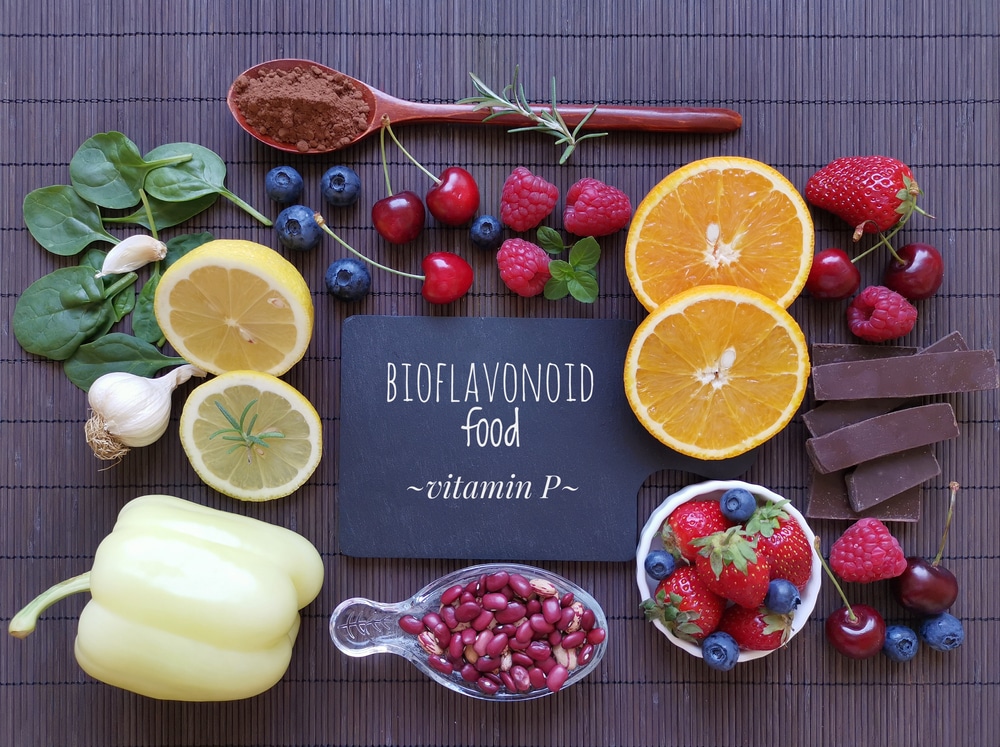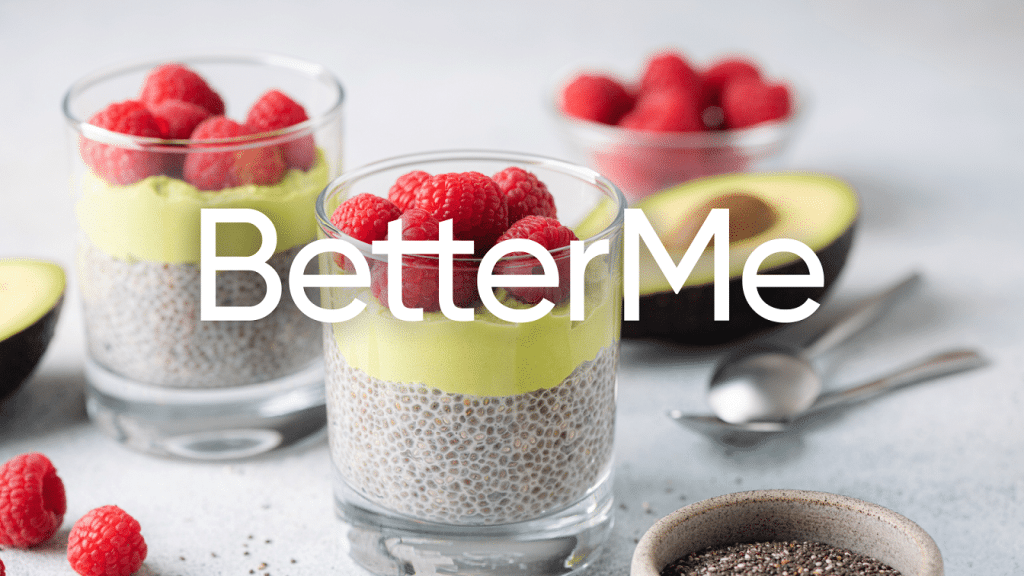If you are looking to support your immune system and prevent lifestyle diseases like diabetes, cancer, and cardiovascular diseases, upping the intake of foods with quercetin is an easy first step. What is quercetin used for, and where does it come from? It’s a natural compound that gives color to many fruits and vegetables. It gets a lot of attention from the scientific community, as they research how quercetin can be used in medicine. Chances are that some quercetin-rich foods are already in your diet, so let’s try to understand what it is and how it works to maintain your health.
What Is Quercetin?
Quercetin is a pigment found in plants that is a flavonoid. This is an entire class of natural products resulting from plants’ metabolism processes (4). Flavonoids found in fruits, vegetables, roots, stems, tea, and wine have been used in ancient medicine for their health-promoting effects (4).
Now, these benefits are also backed by vast amounts of research with quercetin being the most commonly studied flavonoid.
Like other compounds in this group, quercetin is an antioxidant. This means that it mitigates the damage when our cells overproduce so-called free radicals like reactive oxygen species (ROS) that can cause cardiovascular diseases, cancer, aging, etc (2). While we need more research on dietary antioxidants, current studies provide grounds to assume that foods with high levels of quercetin play a role in health promotion (2).
Betterme will keep you laser-focused on your weight loss journey! Nutrient-packed meal plans, fat-blasting workouts, galvanizing challenges and much more. Try using the app and see for yourself!
Quercetin Health Benefits
What are the benefits of quercetin, specifically? It has therapeutic potential for:
- Cardiovascular diseases caused by blood pressure problems. Quercetin has anti-hypertensive action (1). A 2018 article by researchers of Dongguk University in South Korea provides evidence for quercetin’s benefits in food and suggests using the molecule for drug development to treat cardiovascular conditions (12).
- Cancer prevention. Its strong antioxidant properties can inhibit cancer cells multiplication in the lab (3). While the considerable effect is from high medical dosages (3), continuous consumption of quercetin through your diet may also be beneficial.
- Memory-affecting conditions like Alzheimer’s disease and different types of dementia. Quercetin in food affects the nervous system as a neuroprotective agent to possibly help prevent these diseases (10).
- Diabetes. Quercetin has antidiabetic potential as it may influence insulin secretion, improve glucose utilization in peripheral tissues, and has other positive action mechanisms (11).
- Inflammation treatment and immunity-strengthening due to the flavonoid property for immunity-regulation (9).
While quercetin still needs more research to understand the full scope of its impact and use, adding quercetin-rich foods to your plate today will surely benefit you in the long run. It comes as a food supplement complex with various vitamins as well, but the no-hassle option is to look at the list below and make a few tweaks to your existing diet. All of the high-quercetin foods are good for you for other reasons as well, so including them in your diet certainly won’t hurt.
Read More: 13 Essential Vitamins: A Comprehensive Guide
15 Foods With Highest Level Of Quercetin
So here are the foods with the most quercetin to add to your diet (mg of quercetin per 100 g of the food) (7, 8):
- Capers (233 mg)
- Ancho pepper (27,61 mg)
- Onions (22 mg)
- Cocoa powder (20 mg)
- Cranberries (14 mg)
- Raw kale (7,72 mg)
- Asparagus, cooked (7,61 mg)
- Lingonberries (7,4 mg)
- Blueberries (3,12-5,05 mg)
- Raw apples with skin (4,43-4,7 mg)
- Raw broccoli (3,22 mg)
- Green tea (2,69 mg)
- Raw apricot (2,54 mg)
- Raw lemon without peel (2,3 mg)
- Cherries (2 mg)
Yes, you’ve read correctly – chocolate is good for you, just make sure the percentage of cocoa in it is high! And while it looks like you can’t go for onions and capers in every meal, there’s no need to worry because even the bottom of this list is considered quercetin-rich. In most diets, the main sources of quercetin are apples and tea (9).
Foods With Quercetin And Luteolin
Luteolin is another flavonoid antioxidant with similar health benefits (5). You can find it in chamomile flowers, parsley, thyme, cabbages, and celery. Some foods include both quercetin and luteolin: broccoli, onion leaves, peppers, and apple skins. While their impact on health is the same, quercetin’s mechanisms of action are more researched.
How Much Quercetin Should I Take?
At this time, there is not enough scientific evidence to establish a safe or recommended dosage of quercetin (6). In most studies, a dosage of 500 mg to 1000 mg per day was used for up to 12 weeks. Otherwise, an average daily quercetin intake from food-based sources ranges from 9.75 to 18.48 mg per day depending on the country (9). That’s why you shouldn’t worry about any side effects of quercetin, especially if you are just getting it from foods.
Conclusion
Quercetin is a natural antioxidant that promotes health and helps to prevent multiple lifestyle diseases. Foods with quercetin in them are the best way to strengthen your immune system without making major changes to your diet or getting a supplement prescription. Snack with an apple, add capers to a sauce, salad, or pizza, eat a handful of blueberries, or have a comforting cup of green tea. This doesn’t sound difficult at all but brings the much-beneficial flavonoid into your system.
Get your personalized
meal plan!

DISCLAIMER:
This article is intended for general informational purposes only and does not address individual circumstances. It is not a substitute for professional advice or help and should not be relied on to make decisions of any kind. Any action you take upon the information presented in this article is strictly at your own risk and responsibility!
SOURCES:
- Actions of Quercetin, a Polyphenol, on Blood Pressure (2017, pubmed.ncbi.nlm.nih.gov)
- Dietary Antioxidants and Health Promotion (2018, ncbi.nlm.nih.gov)
- Effects of low dose quercetin: Cancer cell-specific inhibition of cell cycle progression (2009, ncbi.nlm.nih.gov)
- Flavonoids: an overview (2016, ncbi.nlm.nih.gov)
- Luteolin, a flavonoid with potentials for cancer prevention and therapy (2009, ncbi.nlm.nih.gov)
- Quercetin (2020, webmd.com)
- Quercetin-A Mini Review (2018, researchgate.net)
- Quercetin: A Treatment for Hypertension?—A Review of Efficacy and Mechanisms (2010, researchgate.net)
- Quercetin, Inflammation and Immunity (2016, ncbi.nlm.nih.gov)
- Quercetin in Food: Possible Mechanisms of Its Effect on Memory (2018, pubmed.ncbi.nlm.nih.gov)
- The Antidiabetic Potential of Quercetin: Underlying Mechanisms (2017, pubmed.ncbi.nlm.nih.gov)
- Therapeutic potential of quercetin as a cardiovascular agent (2018, pubmed.ncbi.nlm.nih.gov)










